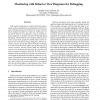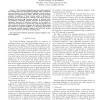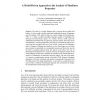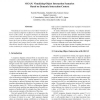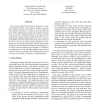VISSOFT
2005
IEEE
13 years 10 months ago
2005
IEEE
Sequence diagrams are commonly used to represent object interactions in software systems. Reverse-engineered sequence diagrams, which are constructed from existing code, are becom...
APSEC
2005
IEEE
13 years 10 months ago
2005
IEEE
UML sequence diagrams are widely used during requirements analysis and design for specifying the expected message exchanges among a set of objects in various scenarios for the pro...
ACSD
2005
IEEE
13 years 10 months ago
2005
IEEE
We provide an automata-theoretic solution to one of the main open questions about the UML standard, namely how to assign a formal semantics to a set of sequence diagrams without c...
EUROMICRO
2006
IEEE
13 years 10 months ago
2006
IEEE
— We propose a method for component-based software and system development, where the interoperability between the different components is given special consideration. The method ...
HASE
2008
IEEE
13 years 11 months ago
2008
IEEE
— UML 1 sequence diagrams have been widely employed for modeling software requirements and design. UML 2 introduced many new features, such as Combined Fragments, to make sequenc...
ECMDAFA
2009
Springer
13 years 11 months ago
2009
Springer
The need for a design language that is rigorous but accessible and intuitive is often at odds with the formal and mathematical nature of languages used for analysis. UML and Petri ...
IWPC
2009
IEEE
13 years 11 months ago
2009
IEEE
Visualizing an execution trace of an object-oriented system as sequence diagrams is effective to understand the behavior of the system. To support developers to understand concret...
ISORC
2009
IEEE
13 years 11 months ago
2009
IEEE
In his article entitled "From Play-In Scenarios to Code: An Achievable Dream", David Harel presented a development schema that makes it possible to go from high-level us...

